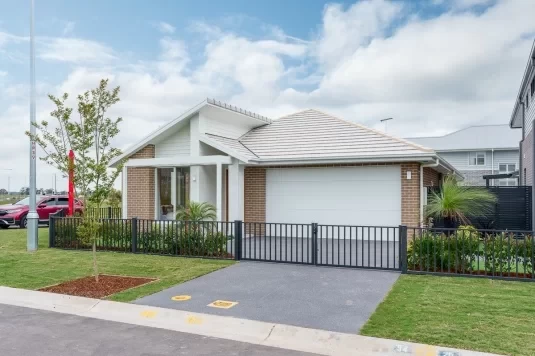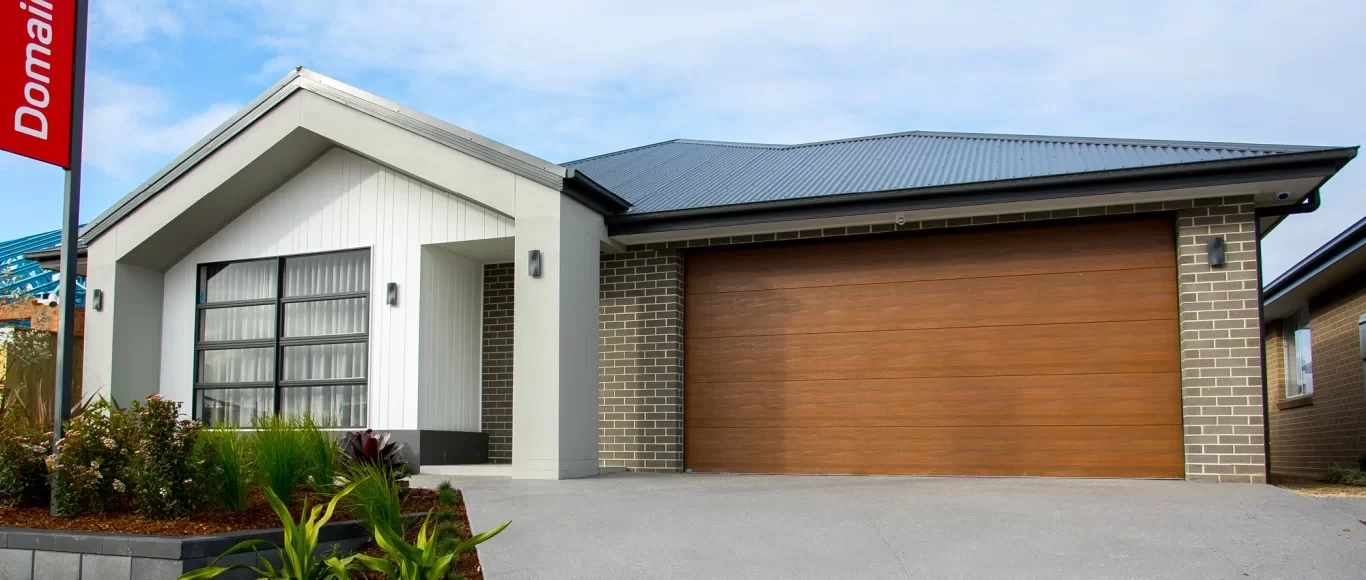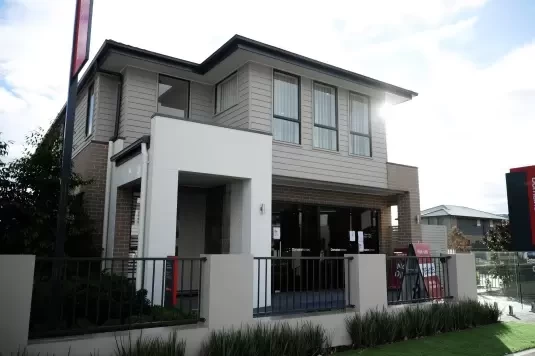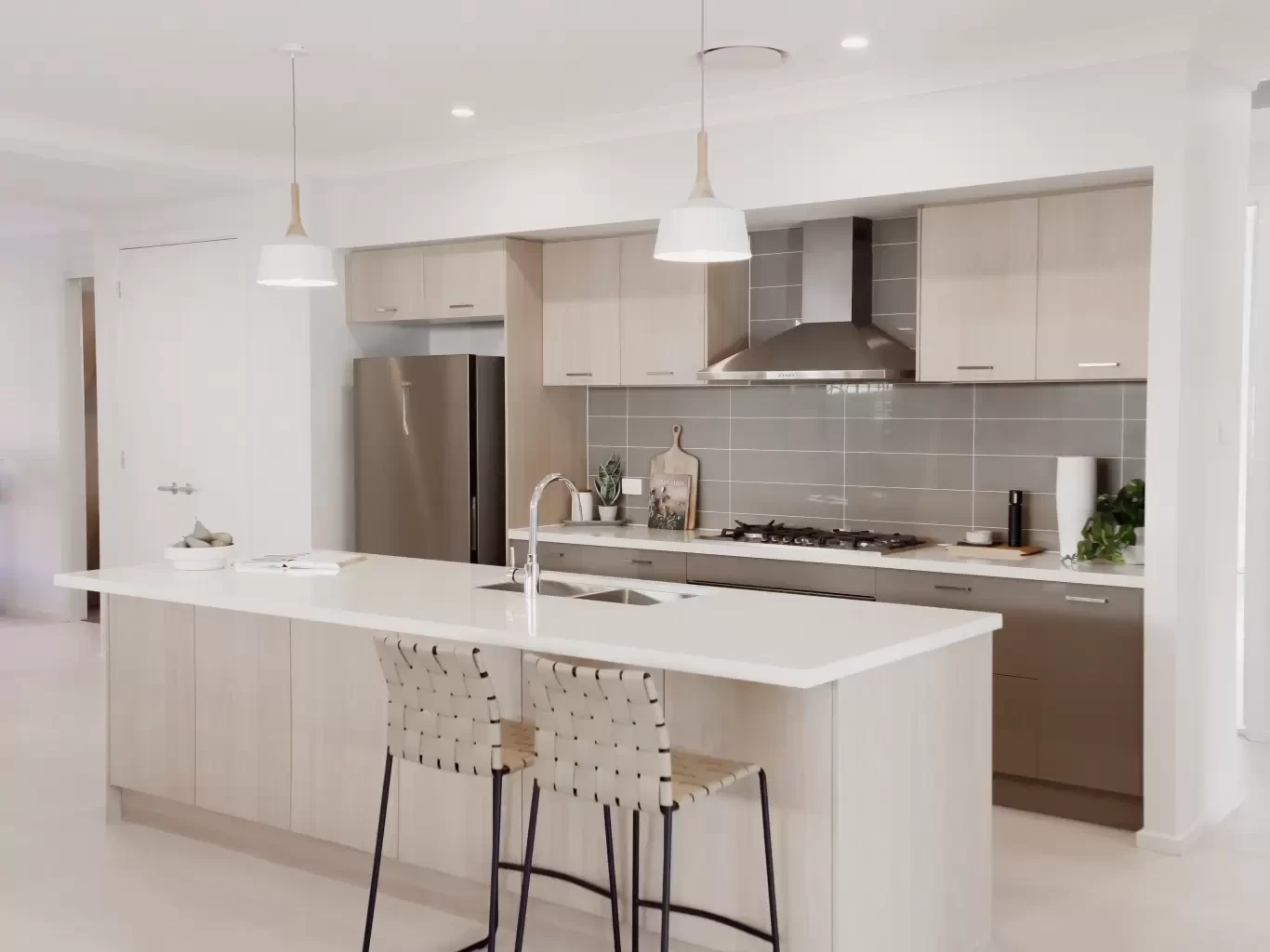Cost to Build a House in Sydney in 2025: Real Data Breakdown
Think you’re sure about the cost of building a house in Sydney in 2025? Let’s rethink that. Prices tell the tale of evolving markets and unexpected trends. If you’re not aware, you could find yourself facing a hefty error.
You’re here to uncover the truth. In moments, we’ll explore the latest data, from suburban differences to the factors influencing these costs—and it’s more than just numbers. Picture having insights that save you thousands. This isn’t merely information—it’s your ultimate tool in navigating Sydney’s real estate maze.
The stakes are immense. Missteps could turn your ideal home into a financial dilemma. But here’s the reassurance: we’ll steer you through every detail, breaking down major expenses, hidden charges, and the tricky impacts of inflation and policy changes.
As we unlock the expert insights for strategic budgeting and steering clear of typical traps, you’ll start to wonder how anyone manages without this kind of guide. Ready to sidestep unexpected costs and understand the final cost? Join us as we ensure your house-building adventure in Sydney is not just affordable but also triumphant.
Step 1: Understanding Average Building Cost Sydney 2025
-
The house building costs in Sydney vary significantly based on materials and locality.
-
Influential factors include the quality of materials, labour, inflation, and location.
-
Comparing suburbs can help align costs with your objectives.
Analyse Current Market Rates
Building expenses in Sydney exhibit a broad spectrum. Different areas present diverse cost structures, which can directly influence your budget, especially when considering the cost per square metre. Recent reports indicate that “building costs per square metre in Sydney range from $2,300 to $7,200”.
Your choice of suburb plays a pivotal role in determining expenses, often affecting your design options as well. For instance, constructing in the Eastern Suburbs is generally more expensive compared to Western Sydney. As of 2024, standard home construction costs ranged from $350,000 to $900,000, but anticipate fluctuations due to inflation and shifting local demands.
To gain an in-depth understanding, refer to survey reports, consult local builders, and keep abreast of market trends, such as those reported by Rider Levett Bucknall. Each suburb introduces its own unique set of considerations.
[Action Items]:
-
Compare updated reports on building expenses across suburbs.
-
Use online tools provided by councils and market resources.
-
Engage with local experts for inside information.
[Dive Deeper]:
-
Relevant quarterly cost insights from Rider Levett Bucknall
-
Market analysis podcasts focused on the real estate landscape.
Factors Affecting the Average Cost
Materials, Labour, and Location
When estimating costs, several elements need consideration. Key factors include material selection, labour expenses, and the suburb of choice. Opting for premium materials may enhance costs but simultaneously increase your home’s value and durability. Labour shortages and rising wages also contribute to financial pressure, potentially affecting project timelines and costs.
The site location remains a critical aspect. Expenses might differ between city centres and outlying areas. Certain regions may necessitate specific designs, further influencing project expenditure. Additionally, understanding site costs is crucial as they can significantly impact the total expenses. Proximity to amenities can also affect overall value and spending.
[Action Items]:
-
Evaluate material options and balance between quality and cost.
-
Assess labour trends and anticipate possible project delays.
Impact of Inflation and Regulations
Global markets shape local construction pricing. Since the pandemic, construction expenditures surged by more than 30%, influenced by inflation and volatile global supply chains. Regulatory changes significantly impact costs too. Sydney’s stringent building codes can add stages of approval and additional fees. Prospective builders should remain informed about these elements during their planning phase.
Regulations might incorporate environmental standards, modifying material and design considerations. Implementing energy efficient systems, while potentially raising initial construction costs, can lead to long-term savings through reduced utility bills and compliance with increasing sustainability requirements. If not accounted for, this can escalate costs. Preparing for these elements helps prevent unexpected budget overruns.
[Action Items]:
-
Track inflation dynamics and revise budgets as needed.
-
Stay informed about building regulations via local council updates.
Grasping the intricacies of Sydney’s building expenses is crucial. This understanding promotes better planning and budgeting, aligning your undertaking with the current market landscape.
Step 2: Detailed Sydney Construction Costs Breakdown
Land, materials, and labour are vital in shaping 2025 costs.
Factor in permits, inspections, and potential weather-related delays.
Be ready for both expected and surprise expenses, as these can significantly influence the total cost of construction.
1. Major construction expenses
Primary Cost Drivers: Land, Materials, Labour
In the vibrant city of Sydney, land prices, materials, and labour are primary drivers of construction costs. Land costs in sought-after suburbs have surged, with prices soaring past $4,500 per square metre in some locales. Material prices are influenced by demand and global supply challenges, particularly traditional staples like brick and steel. The labour market remains competitive with skilled trades requiring over $90 per hour due to shortages. Bringing a quantity surveyor into the mix early provides a detailed cost breakdown, paving the way for potential cost-saving opportunities.
For in-depth exploration, “Building Cost Planners: Data and Analysis” by Peter Steele elucidates market trends, offering invaluable insights for smart choices in materials and labour.
Typical Cost Ranges in 2025
Fluctuations in prices are inevitable. Construction costs per square metre in Sydney currently range from $2,300 to $7,200. A cosy, modest residence might run approximately $350,000, whereas luxurious ventures could reach up to $2 million, largely swayed by choice of finishes. Importantly, costs for builders and subcontractors have risen nearly 15% since 2022 due to heightened demand and material constraints. Experienced builders often highlight that initial estimates can vary significantly as projects unfold.
For those eager to expand their understanding, "Economic Challenges of the Sydney Construction Industry" unfolds the regional influences on costs, serving as an essential guide to the intricacies behind these price ranges.
2. Additional expenses to consider and first home owner grant
Permits, Inspections, and Finishes
Embarking on a building journey in Sydney, whether on vacant land or an existing property, entails securing various permits, each with its own cost. From development applications to construction certificates, these can collectively tally into thousands. Routine inspections add to the expenses but ensure compliance with safety and building regulations. The choice of finishes—from basic to premium—vastly impacts costs, with many homeowners finding that investing in top-tier finishes for kitchens and bathrooms amplifies property value.
The “NSW Residential Building Guide” is a valuable tool, laying out requirements and associated costs for permits to help you navigate these elements with precision and avoid unexpected financial surprises.
Unexpected Costs: Weather Delays
Weather-induced delays necessitate budgeting for contingencies. Sydney's unpredictable climate, with occasional heavy rains, can impede construction progress. Contract clauses for weather-related delays require thorough examination, with experts consistently recommending setting aside roughly 10% of the project's budget for these unforeseen events.
To delve deeper into handling unexpected costs, explore "Risk Management in Construction Projects" by Rick Fenton. This resource offers a comprehensive approach to mitigating risks, emphasising the value of planning and readiness in managing delays and associated costs effectively.
Step 3: Budgeting for a New House in Sydney 2025
-
Set a realistic budget focus early on.
-
Leverage digital tools for precise budgeting.
-
Prioritise financial advice to avoid mistakes and achieve cost savings.
1. Initial Budgeting Steps
Crafting a realistic budget for building a new house in Sydney in 2025 entails understanding Sydney costs, which include the average cost per square metre and factors like builder charges and house size. Start by diving into market analysis. For instance, the median house price in Sydney is predicted to fall to $1.2 million by June 2025. Grasping such data helps in precise budgeting. Discuss your housing aspirations with a few builders to understand the budget spectrum. Emphasise essential features first, reserving funds for potential future enhancements. These discussions will assist you in outlining must-have features and estimating costs effectively. Examine previous projects to realise cost structures and pinpoint areas for potential savings without compromising value.
Prioritising spending categories is critical. Allocate a segment of your budget towards essentials: land, materials, and labour. Subsequently, determine how much to designate for additional expenses, such as permits, finishes, and inspections. Unexpected costs shouldn’t be overlooked. Typically, it’s wise to include about 10% of your budget for unforeseen events like weather delays.
2. Tools for Effective Budgeting
Harnessing the right tools can streamline your budgeting process. Numerous apps and online platforms are designed to track expenses effectively. The Australian government’s MoneySmart website is a valuable starting point, offering a comprehensive budget planner. The Commonwealth Bank of Australia’s budgeting tools further aid in setting financial boundaries and monitoring spending. These platforms empower you to input all expected expenses, providing a real-time snapshot of your financial outflows.
Consider consulting with financial advisors for expert insights. These professionals offer tailored advice, especially those specialising in housing projects. They help create a practical budget plan and propose strategies to maintain it. Advisors can also foresee changes in mortgage rates—currently around 7%, with potential declines. Understanding these shifts helps in optimising your financial strategy, particularly for eligible first home buyers looking to take advantage of government grants and incentives.
3. Factors Influencing Your Budget
Market dynamics significantly impact your budget. As of early 2025, building approvals diminished by 3.6%, signalling supply chain challenges. This trend can affect material and labour costs. Keeping abreast of these developments is paramount to sidestep unwelcome surprises. Suburban areas might present more economical options than inner-city locales, primarily due to lower land costs. Contemplating a move farther out could provide cost reductions and allow your budget to go further.
Mortgage rates present another crucial factor. Anticipating potential rate reductions could unlock more spending flexibility. As rates decrease, monthly payments become more manageable, enabling you to reallocate funds to other aspects of the build or to upgrade finishes previously considered too costly. Additionally, exploring options like the home buyer assistance scheme can provide financial benefits, making it easier to purchase land and build your home.
4. Real-Life Case Studies and Further Reading
Exploring real-life case studies deepens your understanding of how the first home owner grant can significantly reduce the overall costs associated with buying or building a new home. Works like “The Housing Market and Its Influence on the Economy” delve into how economic factors dictate building costs. Focusing more specifically, “Building a Home: A Guide to Financial Planning” outlines step-by-step budgeting methodologies.
Engage with online forums and blogs discussing Sydney’s housing market for real-time insights. These discussions often unearth hidden expenses or financial pitfalls that new builders should anticipate.
5. Arguments and Counterarguments
Discussions around budgeting for a house often revolve around the best methodologies. Some advocate for upfront investments in premium materials, suggesting long-term savings through minimised repairs and replacements. Others recommend beginning with decent, lower-cost materials with plans for future upgrades as finances permit. Both strategies have their merits; your choice should resonate with your long-term ambitions and current financial stance.
Even with constrained budgets, many emphasise consulting financial experts. The expense is minor relative to the potential savings and financial safety net they offer. Detractors of this approach argue for self-management to save costs, yet they might overlook critical insights a professional advisor might provide.
The First Home Owner Grant is a significant financial incentive provided by the NSW Government for first-time home buyers and those constructing new homes. Housing trends and market dynamics are ever-evolving. Dive into research pieces like “The Economy of Building” for insights into broader economic impacts, and consider attending seminars or webinars for recent homebuying insights.
Advanced Tips for Cost-Effective Building
-
Maximise resources by opting for sustainable materials
-
Avoid underestimating timelines
-
Compare contractor bids for best value
1. Maximising resources
Explore sustainable materials
Utilising sustainable materials isn't just a fleeting trend; it's a significant market with impressive growth projections. The global sustainable construction materials market, valued at $286.85 billion in 2024, is anticipated to swell to $456.94 billion by 2028. While these materials might carry a higher initial price, they typically offer longevity and energy efficiency that can offset those costs over a lifetime. Balancing upfront expenses with potential savings is crucial for boosting overall cost-effectiveness.
Builders and industry leaders are encouraged to delve into certified courses or resources centred on sustainable building. Influential works like "Sustainable Construction: Green Building Design and Delivery" by Charles Kibert provide in-depth perspectives on sustainable approaches. Criticisms often fixate on the initial costs; however, focusing on the long-term benefits and property appreciation offers a decisive counterargument.
Compare contractor bids to save on costs
Analysing contractor bids transcends mere numbers; it's about strategic evaluation. Bob Vila emphasises the significance of value over price, stating, "The cheapest bid is not always the best bid. Look for value, not just the lowest price. A higher upfront cost may save money in the long run through better quality work and materials." Angie Hicks suggests obtaining detailed, itemised quotes for a comprehensive comparison, enabling clear identification of cost variances.
A significant 68% of building products companies offer sustainable solutions, highlighting the importance of choosing services that add value. Thorough bid analysis uncovers crucial financial insights often missed without detailed scrutiny. For those interested in contractor data analysis, "How to Estimate with RSMeans Data: Basic Skills for Building Construction" is a recommended resource. This careful distinction helps avoid unexpected expenses and sets clear expectations for all parties involved.
2. Common pitfalls and how to avoid them
Be wary of underestimating project timelines
Underestimating timelines is a common mistake in construction projects. Time projections frequently neglect potential disruptions from unforeseen factors like severe weather or supply chain delays. Weather-related issues alone might require contingency funds adding approximately 10% to projected costs. Effective timeline assessments mandate contractors to account for possible delays comprehensively.
Jay S. Newitt's "Construction Scheduling: Principles, Practices, and Management" explores planning methods necessary for realistic scheduling. While some debate overestimating timelines for safety versus risking overruns, a conservative forecast can avoid logistical mishaps. Understanding time implications sharpens budgeting, offering stakeholders a clearer financial and project roadmap.
Avoid cutting corners to save money
The temptation to cut corners for immediate savings can lead to long-term expenses. Skimping on vital components or labour often results in compromised quality, leading to rapid deterioration and increased maintenance costs. The misconception that short-term savings equal long-term economy is a serious miscalculation. Key decision-makers should consider total ownership costs, not merely the initial expenditure, as advised by the U.S. Green Building Council.
This guidance encourages wise spending, prioritising quality outputs that ultimately reduce maintenance expenses, prolong service life,and enhance satisfaction. Cutting corners opens the door to unnecessary costs, making it a critical issue for those overseeing construction and investment. For an understanding of balancing quality and cost, "Real Estate Development - Principles and Process" by Mike E. Miles provides valuable insights.
Factors Influencing Sydney House Prices 2025
-
Uncover what's driving house prices today
-
Assess how demand influences costs
-
Recognize economic elements impacting the market
1. External economic factors
External elements significantly shape Sydney’s housing market. The global economy affects interest rates and investor attitudes. Many experts closely monitor economic predictions to forecast shifts in property values. As economies prosper, house prices often rise with investors seeking stable, lucrative options.
Adjustments in government policies can also sway the market. Policy changes might influence interest rates, taxes, or housing regulations. For instance, an altered cash rate can lead to shifts in borrowing expenses. Lower rates might increase buyer interest, heightening competition and driving prices up. Conversely, higher rates could dampen demand as borrowing becomes pricier.
For in-depth insights, explore "The Economy of Cities" by Jane Jacobs. This book illuminates how economies mould urban landscapes, affecting everything from real estate to community growth. A timeless reference, it contextualises how macroeconomic trends impact local markets.
2. Local demand and supply
Present demand and supply dynamics play a pivotal role in determining house pricing. Sydney, as a city, contends with distinctive pressures. There's a steady rise in population due to both domestic migration and international arrivals, increasing housing demand, which typically drives prices upward. If supply trails behind, a bidding war over existing homes can further squeeze the market.
Certain areas draw more interest due to their amenities, schools, or proximity to job centres. Suburbs with limited availability often experience faster price growth. To delve deeper into these trends, "Australia's Housing Market: The Future is Here" by Bernard Salt provides valuable data and insights into population patterns and their effect on various Sydney regions.
While luxury builds demand higher prices, the downside may be slower turnover, as fewer buyers can meet the premium.
3. Land availability and zoning regulations
A frequently overlooked aspect is land availability. In Sydney, securing land for new developments can be daunting. Constraints arise from the city’s expanding boundaries and existing infrastructure. This scarcity naturally inflates prices. Moreover, zoning laws can either restrict or allow different forms of development, offering insights into future price changes.
Zoning can limit construction types, affecting developers' willingness to pay for land. In regions with lenient policies, high-density developments are possible, potentially reducing prices through increased supply. However, stricter limitations could push costs higher as fewer properties are constructed.
4. Building costs and inflation
Constructing a house in Sydney hinges on more than just market and land factors. Building expenses are major contributors to pricing. Material costs, labour, and inflation collectively determine final prices. Post-pandemic, materials and labour have become more costly, partly due to supply chain disruptions. Inflation affects borrowing costs, impacting both builders and buyers.
When does building become more economical than buying in 2025? It's variable, yet building offers more control over quality and design. However, managing unexpected costs is vital to avoid exceeding budgets. For luxury homes, expect expenses starting at £2 million or more.
For an extensive look at costs, refer to "The Cost of New Housing: Trends and Analysis," which explores various crucial factors affecting today's building expenses.
5. Technological advancements and sustainability
Technology is transforming construction, enabling cost-effective homebuilding by employing methods like modular construction or eco-friendly practices. These techniques may initially be pricier, but their long-term savings on utilities and upkeep make them desirable.
By incorporating technology, builders can meet environmental goals more efficiently. This not only aids a greener Sydney but also aligns with buyer preferences for sustainable living. As technology progresses, it continues to shape home construction and valuation, potentially reducing costs by accelerating build times and minimising waste.
To explore further, "Sustainable Architecture" by James Steele provides a comprehensive overview of how environmentally conscious practices in construction are gaining popularity. It’s a gateway to understanding the trajectory of sustainable housing and its potential pricing impacts.
In Sydney, house prices fluctuate due to numerous factors. From external economic dynamics to local demand patterns and from land availability to technological advancements, they all contribute to the average cost of building a house. These components collectively craft Sydney’s real estate outlook for 2025.
Troubleshooting Common Issues
-
Timely materials and favourable weather are essential
-
Budget excesses occur often, but are manageable
-
Strategies for ensuring project success
1. Common construction problems
Tackle material shortage delays
Material shortages can significantly impact your timeline. Address timing with precision to minimise interruptions.
-
Maintain open dialogue with suppliers. Regular communication gives you insights into stock levels and delivery schedules, aiding proactive planning.
-
Broaden your supplier network. Avoid dependency on one source. A varied supplier list offers alternatives during shortages, enhancing adaptability.
-
Utilise demand forecasting tools. Leverage data to anticipate material needs and secure supplies before a shortage hits. Projecting demands can prevent project halts.
-
Reschedule strategically. Advance tasks that don't rely on delayed materials to sustain momentum and circumvent downtime.
-
Explore material substitutes. If certain materials aren't available, investigate alternatives that meet requirements. Ensure these are cost-effective and structurally viable.
Mitigate weather-related disruptions
Weather can complicate timelines, particularly in regions with unpredictable climates.
-
Stay updated with weather reports. Monitor conditions via weather apps for timely alerts, ensuring preparedness.
-
Integrate buffer days. Allow extra days within your timeline to absorb weather disruptions, maintaining overall scheduling flexibility.
-
Implement protective measures. Utilise tarps and waterproof covers to shield ongoing work from adverse weather, minimising potential damage.
2. Dealing with budget overruns
Techniques for budget reallocation
Cost overruns are prevalent, with 98% of large projects experiencing them. Managing these is vital to project coherence.
-
Conduct detailed budget analyses. Examine expenses meticulously to identify excesses and potentially reduce extraneous costs.
-
Revisit contracts with partners. Discuss adjustments in cost and terms with contractors and suppliers. Consider minor scope modifications if needed.
-
Refine project scope. Evaluate the necessity of each component, focusing on critical tasks and phasing out non-essential ones.
-
Utilise contingency reserves. Allocate 10-20% of your budget for unforeseen expenses, ensuring financial resilience.
Strategic fund management
-
Focus on essential components. Prioritise foundational elements that are indispensable to the project.
-
Postpone non-urgent upgrades. Delay features like luxury finishes or landscaping to manage immediate financial outlays.
-
Implement real-time tracking. Use cloud-based tools for continuous budget monitoring, ensuring financial oversight and awareness.
-
Engage financial consultants. Collaborate with financial experts to optimise budget strategies and adapt to fiscal challenges.
By employing these methods, you ensure flexibility and foresight in construction management, turning potential hurdles into manageable scenarios.
Further Resources and Reading
-
Sustainable building: Key to long-term savings and environmental progress.
-
Sydney market insights: Shapes budgets, planning, and investment returns.
-
Understanding costs: Essential for project success and financial clarity.
1. Related topics or advanced guides
Seek articles on sustainable building practices
Sustainability is shifting from trend to standard. By 2025, numerous Sydney developers are engaging with eco-friendly materials. Options like recycled timber or low-emission paints may cost more at first but often result in lower utility expenses and heightened property values over time.
Exploring sustainable practices can save cash and increase your property's value. Cities around the world gain efficiency through green tech, sparking new ideas and effective construction techniques. Check out real-life examples of projects that balance environmental harmony with style and comfort.
Dive Deeper:
-
The Green Building Podcast: Sustainability in construction highlights.
-
Sustainable House Day: Features tours of green homes across Australia.
-
Your Green Home by Alex Wade: A comprehensive guide to eco-friendly home building in Australia.
Explore in-depth analysis on Sydney housing market
Sydney's housing landscape is ever-evolving. Economic shifts such as interest rates determine rising prices in response to demand and limited land. Gaining a full grasp of these components allows builders to plan tactically and allocate budgets wisely. Reviewing past and present trends offers insight into upcoming pricing and demand forecasts.
Engaging with product leaders who provide a comprehensive market view is crucial for customizing investments. It’s beneficial to consult with economists for professional insights on real estate investments, preparing for potential market changes. Understanding regional and city-specific dynamics enhances flexibility in market exploration.
Dive Deeper:
-
The Sydney Property Market Podcast: Expert views that provide clarity.
-
CoreLogic's Monthly Housing & Economic Chart Pack: Visual data on Australian housing trends.
-
Australian Property Investor Magazine: Market forecasts and strategic insights.
2. Why understanding building costs matters
Importance in project planning and financial health
Building involves more than just choosing materials or a contractor; understanding overall costs ensures realistic project timelines and budgets. It bolsters financial health by avoiding over-expenditure. Awareness of land, permit, and labour expenses prevents financial pitfalls, ensuring effective resource allocation and smooth construction progress.
Building costs inform broader financial strategies, setting crystal-clear financial goals and allowing for adjustments in response to supply chain dynamics. This flexibility enhances financial resilience, leading to a robust approach to construction financing.
Action Items:
-
Regularly refresh expense forecasts.
-
Monitor financial benchmarks frequently.
-
Utilise project management tools for budget tracking.
Benefits of informed decision-making in real estate
Real estate choices can be daunting due to shifting markets. Informed decision-making empowers strategic investments, reducing the risk of financial missteps. Understanding building costs leads to more accurate valuations, enhancing negotiations and investment decisions. It also guides realistic project evaluations and strategic upgrades, syncing with market expectations.
Informed perspectives mean identifying potential savings or value-boosting opportunities. This includes adopting technologies enhancing construction efficiency or selecting long-term savings materials. Partnering with market analysts and consultants provides invaluable data, ensuring decisions align with financial objectives.
Action Items:
-
Regular consultations with real estate experts.
-
Keep track of market trends for tactical adjustments.
-
Participate in industry webinars and educational workshops.
Conclusion
Crafting your dream home in Sydney by 2025 calls for strategic planning and insight into the ever-evolving market dynamics. We've explored everything from the intricacies of market rates to the nuances of material costs. Now, you're equipped with insights on how inflation and fresh regulations may influence your budget. We've revealed the fundamental expenses, highlighting how labour and materials play pivotal roles.
With the expert insights and tools at your disposal, you're ready to design a budget that fits your personal ambitions. Stick to using financial aids and seek expert insights whenever necessary. By opting for sustainable materials and wisely comparing contractor offers, you'll optimise your expenses.
Remember, a successful home-building experience begins with well-informed choices. Consider your project not merely as a monetary investment but as the ultimate platform for your future comfort. Whether it's tackling potential delays or adapting to unforeseen costs, the expertise gained here empowers you to tackle situations confidently. You're set to make deliberate choices, shaping a home tailored perfectly to your needs. Ready to unlock the journey? Dive into your plans with enthusiasm, and let each lesson be your guide.








